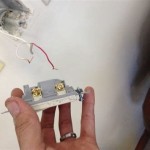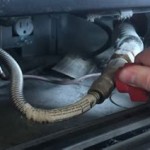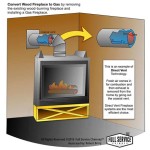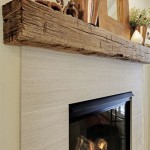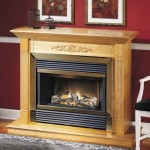How To Build a Fireplace Fire
Building a fireplace fire is a fundamental skill that provides warmth, ambiance, and a sense of comfort. While seemingly straightforward, a successful and safe fireplace fire requires understanding the principles of combustion, proper preparation, and careful execution. This article outlines the step-by-step process for building a fireplace fire effectively, emphasizing safety and efficiency.
Preparation: Selecting the Right Materials
The success of a fireplace fire hinges on the quality of the materials used. Different types of wood burn at different rates and produce varying levels of heat and smoke. Selecting the appropriate wood is crucial for achieving a clean and efficient burn.
Seasoned Hardwood: The optimal choice for a fireplace is seasoned hardwood, which has been air-dried for at least six months, ideally a year or more. Seasoning reduces the moisture content of the wood, typically below 20%, allowing it to burn hotter and cleaner. Common hardwoods suitable for fireplaces include oak, maple, ash, and birch. These woods provide a dense fuel source, resulting in a longer-lasting and more intense fire.
Softwood Considerations: While softwood, such as pine and fir, can be used, it burns faster and produces more smoke and creosote. Creosote is a flammable residue that accumulates in the chimney and can pose a significant fire hazard. If softwood is the only available option, it should be thoroughly seasoned and burned sparingly. Regular chimney inspections and cleaning are essential when burning softwood.
Avoid Green Wood: Green wood, also known as unseasoned wood, contains a high moisture content and is difficult to ignite. It produces excessive smoke, minimal heat, and contributes significantly to creosote buildup. Using green wood is inefficient and increases the risk of chimney fires. It is always preferable to source properly seasoned wood.
Kindling: Kindling consists of small, dry pieces of wood, typically twigs or small branches, that are easily ignited. The purpose of kindling is to establish a small flame that can then be used to ignite the larger pieces of fuel wood. Softwoods like pine are often ideal for kindling due to their high resin content and ease of ignition. Alternatively, commercially available fire starters can be used as a substitute or supplement to kindling.
Tinder: Tinder is a highly flammable material that ignites easily with a spark or flame. Its purpose is to quickly establish a flame that can then ignite the kindling. Suitable tinder materials include dry leaves, shredded paper, cotton balls coated in petroleum jelly, or commercially produced fire starters. The tinder should be dry and loosely arranged to allow for ample airflow.
Building the Fire: Three Common Methods
There are several methods for building a fireplace fire, each with its advantages and disadvantages. Three common methods include the teepee method, the log cabin method, and the top-down method. The most appropriate method depends on the type of wood, the size of the fireplace, and personal preference.
The Teepee Method: The teepee method involves arranging kindling in a conical shape, resembling a teepee or tent. The tinder is placed at the base of the teepee, and the kindling is arranged around it, leaving space for airflow. This method is simple and effective for starting a fire quickly, as the conical shape concentrates the heat and allows for good air circulation. Once the kindling is burning vigorously, larger pieces of fuelwood can be added gradually, maintaining the teepee shape until the fire is well established.
The Log Cabin Method: The log cabin method involves building a structure resembling a miniature log cabin using larger pieces of fuelwood. Two logs are placed parallel to each other, with a gap between them. Two more logs are placed perpendicular to the first pair, forming a square or rectangle. This process is repeated, alternating the direction of the logs, until a log cabin structure is formed. Tinder and kindling are placed in the center of the cabin, and the fire is started. The log cabin method provides a stable and long-lasting fire, as the logs burn slowly and evenly. It is particularly well-suited for burning larger pieces of fuelwood.
The Top-Down Method: The top-down method involves placing the largest pieces of fuelwood at the bottom of the fireplace, followed by progressively smaller pieces, with the kindling and tinder on top. This method may seem counterintuitive, but it promotes a cleaner and more efficient burn by allowing the gases released from the wood to burn off as they rise through the flames. The top-down method requires more patience to get started, as the flame must slowly burn down through the layers of wood. However, once established, it produces a long-lasting and relatively smokeless fire.
General Fire Building Steps: Regardless of the method chosen, the following steps should be followed. First, ensure the fireplace damper is fully open to allow for proper ventilation. Next, clear any ashes from the firebox to allow for better airflow. Arrange the tinder and kindling according to the chosen method, ensuring ample airflow. Light the tinder with a match or lighter, and carefully monitor the flame. As the kindling catches fire, gradually add larger pieces of fuelwood, maintaining the structure and ensuring adequate airflow. Avoid overcrowding the firebox, as this can stifle the flames and produce excessive smoke. Once the fire is well established, adjust the damper as needed to control the rate of burn and heat output.
Safety and Maintenance: Ensuring a Safe and Efficient Fire
Building a fireplace fire requires adherence to safety precautions to prevent accidents and ensure the longevity of the fireplace and chimney system. Regular maintenance is crucial for preventing hazards and maintaining optimal performance.
Carbon Monoxide Detection: Carbon monoxide (CO) is a colorless, odorless, and deadly gas produced by incomplete combustion. A properly functioning fireplace will vent CO out through the chimney, but malfunctions or blockages can lead to CO buildup inside the home. Install carbon monoxide detectors on every level of the home, especially near sleeping areas, and test them regularly. If the CO detector alarms, immediately evacuate the home and call emergency services.
Fireplace Screen: Always use a fireplace screen to prevent sparks and embers from escaping the firebox. These sparks can ignite nearby carpets, furniture, or other flammable materials. The screen should be made of sturdy metal mesh and should completely cover the opening of the fireplace. Ensure the screen is properly secured and in good condition before lighting a fire.
Chimney Maintenance: Regular chimney inspections and cleaning are essential for preventing chimney fires and ensuring proper ventilation. Creosote, a flammable residue deposited in the chimney by burning wood, can accumulate over time and ignite, causing a dangerous chimney fire. A qualified chimney sweep should inspect and clean the chimney at least once a year, or more frequently if burning wood regularly. The chimney should also be inspected for any cracks, damage, or blockages that can impede airflow and increase the risk of carbon monoxide poisoning.
Disposal of Ashes: Dispose of ashes carefully and responsibly. Hot ashes can remain smoldering for several days and can ignite nearby materials. Allow the ashes to cool completely before transferring them to a metal container with a tight-fitting lid. The container should be stored away from flammable materials, such as wood piles, garages, or decks. Alternatively, ashes can be spread thinly on gardens or lawns as a natural fertilizer, but only after they have cooled completely.
Never Leave a Fire Unattended: Never leave a fireplace fire unattended, especially when children or pets are present. A sudden shift in wind or a falling log can send sparks or embers flying, posing a fire hazard. Always supervise the fire closely and ensure that it is completely extinguished before leaving the room or going to bed. Extinguish the fire by allowing it to burn down naturally or by smothering it with sand or dirt.
Choosing the Right Firewood Storage: Proper firewood storage is also a key factor in safety. Wood should be stored in a dry, well-ventilated area away from the house to prevent the accumulation of moisture and pests. Ideally, firewood should be stacked off the ground on pallets or racks to promote air circulation and prevent rot. Covering the firewood with a tarp can protect it from rain and snow, but the sides should remain open to allow for ventilation. Avoid storing firewood inside the house, as this can attract pests and increase the risk of fire.
By following these guidelines, individuals can build and maintain a safe and efficient fireplace fire, enjoying the warmth and ambiance it provides while minimizing the risks associated with open-flame combustion. Prioritizing safety and maintenance is crucial for ensuring the longevity of the fireplace and the well-being of the occupants.

How To Build And Start A Fire In Your Fireplace Full Service Chimney

How To Build And Start A Fire In Your Fireplace Full Service Chimney

2 Foolproof Ways To Start A Fire In Fireplace Advice From Bob Vila

How To Build The Perfect Fire In Your Fireplace Or Wood Stove
How To Start A Fireplace Fire 2 Safe And Easy Methods

How To Start A Fireplace Fire The Home Depot

How To Build And Light A Fire In Fireplace Universe

Master The Art Of Efficiently Building A Fire

How To Light A Fire In Fireplace With S Wikihow

Home


